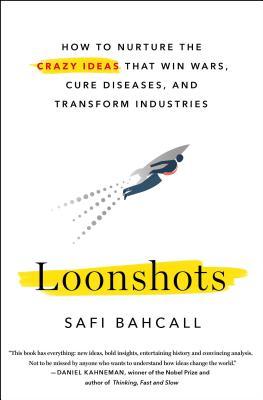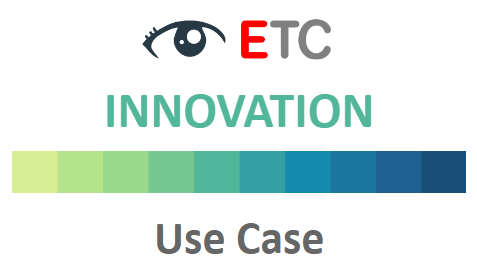Innovation
ETC AI generates the EMOTIONAL Fingerprint™ of Volunteers-Employees to improve their Evaluation plus scientifically diagnose Innovation Critical Issues, Corp Climate, and the organization’s performance.
Loonshots: is a term coined by second-generation physicist and biotech entrepreneur Safi Bahcall; a loonshot is an idea that aims high (like the moon) but also goes off-course, and, when pitched to peers, is said to contain more than a modicum of crazy. Some of the world’s most successful business ideas have been loonshots.
Loonshots explores the process of innovation, specifically how groundbreaking ideas emerge from simple thoughts and how important it is for organizations to give courses to them by creating learning environments where people feel safe exploring and creating.
Read the Book Summary
At its core, innovation is about experimentation — and experimentation means risk. You try something out and see what happens; if it doesn’t work out for some reason or another, you keep trying until you find something that does work. But if something does work?
Then you have something special — something that can help you win over competitors and get ahead in your field! Loonshots explores how anyone can be creative if they give course to their craziest ideas.
The greatest ideas often arise in the most unexpected moments in life, so when you do get one of those moments, hold on to it and make it a mission to bring it to life, because it is precious and quite rare.
Here are the top three lessons from the book:
– Innovation is the key to gaining a competitive edge by paving new, improved ways of doing things.
– An organization needs to nurture both its artists and soldiers if it wants to succeed.
– Don’t let good ideas pass you by out of fear of the unknown.
– We will now delve deeper into these lessons and discover how vital innovation is, and, more importantly, how to make it happen.
Lesson 1: A successful organization is defined by its ability to foster a creative environment for its employees.
Nokia was a pioneer in the mobile phone industry, but it soon lost its innovative edge as it became more conservative about new ideas and products. Apple is a great example of how being creative can pay off: since its launch in 2007, the iPhone has become one of the most successful products of all time.
As Nokia became more conservative and stopped innovating as much, they saw sales and profits decrease.
Similarly, during World War II, America failed to pursue Leo Young’s radar innovation. They knew about it but didn’t think it was necessary at the time because they were focused on other things.
However, because they failed to acknowledge how it could help them spot enemy ships and planes, Pearl Harbor happened. The lesson here is that sometimes risk-averse companies are the ones to lose big in the end. Successful organizations know how to manage risk, while also betting big on innovation and fostering it.
Lesson 2: Innovators and those who execute plans are equally important to an organization’s success.
The public conception is that innovators are lone-wolfs, probably native geniuses who find it easy to innovate. While in some cases this might be true, the truth is that innovators are often people like me and you.
What sets them apart and allows them to create and perfect their craft are other people who offer the resources they need.
The first rule you should know if you’re managing these people is that innovators are crucial for your business’s future development in new and emerging markets.
The second rule you should know is that those who take care of what’s already going well in your company are today’s breadwinners. They are the pylon that sustains your current business activities. They’re equally important, as Steve Jobs found out after being kicked out of his company.
Thirdly, make sure to keep the relationship between the two parties well-maintained. A company has a low chance of surviving in the competitive business world if they have troubles internally. Act as an intermediary and ensure that both sides know each other’s value.
Lesson 3: It’s our human duty to give a chance to any idea worth trying out.
As long as there are more doors to knock on, loonshot ideas still have a chance to surface. Just like once-in-a-lifetime occurrences, such as some falling stars, major historical events happening, or Einstein being born, loonshot ideas often get a short lifespan before disappearing for good.
Loonshots are the ultimate expression of creativity and innovation. They’re often risky, but they can also be game changers. You don’t have to look far to find examples of companies who have exploited this approach: Apple’s iPod and iPhone, Amazon’s Kindle e-reader, or even Starwars’s script all began life as crazy ideas that were given the space they needed to flourish into something tangible.
However, when there’s no place to look for approval, you’re only left with an idea that’s slowly fading into every day monotony. That’s what happened in China when Shen Kuo discovered that planets orbit around the sun. Unfortunately, no one wanted to listen to him, or fund his ideas.
Half a century later, a Danish astronomer discovered the same concept. Luckily, Western Europe was more open to innovation, but what if that hadn’t been the case? It only goes on to show how essential it is to give course to revolutionary ideas, regardless of how impossible they may seem. That’s how we evolve!
The Loonshots Review
Loonshots is quite an informative book since it gives insight into how companies work internally to come up with innovative ideas that often change our world. I liked how this book showed examples of different products created through loonshots.
When you think about it, many products would not have existed if it weren’t for someone having an idea about them first and an equally dedicated team to make it all happen while keeping the business going.
This lecture is truly eye-opening in highlighting how fragile and remarkable our ideas are, whether big or small. The book will show you how the human mind can create wonders if you just let it.



